When I’m dancing I’m telling a story…
The realization of a dream
I first met Yuliana Basmajyan over eight years ago in a tango class. One night as we were leaving class, she looked up at the night sky then turned to me. I had asked her, “Where do you want to go with tango?”
Her answer, “I want to perform.”
In 2011 Yuliana Basmajyan and her partner Brian Nguyen achieved 3rd place at the Mundial de Tango (Tango World Championships held annually in Buenos Aires). It is a competition fiercely dominated by Argentine couples. In fact, since 2003, only three non-Argentine couples have taken 1st. Yuliana and Brian accomplished this after only a few years dancing together.
She now teaches weekly classes in Los Angeles, organizes two Milongas (Milonga Lunaand Milonga Querida), performs and teaches workshops at tango festivals across the United States.
Performing is more than dancing with a partner on a stage. It is about completing and fulfilling our innate desires with perseverance, patience and discipline.
Yuliana Basmajyan’s life is a performance. The following interview is her story – a life lived passionately.
Interview by Gabriel Magni
Inteviewer: You said something that was really interesting to me the last time we talked. You said as a young girl you identified with Latin music and culture. How did that happen?
Yuliana: I found myself. When I was a child I would watch Latin ballroom competitions. I could see myself dancing. I loved dancing. I wanted to go to Spain. When I moved here [California] I loved flamenco, so I decided to take flamenco classes. Then it was salsa classes. I decided to decorate my house in the Spanish style. This feeling was always there – being connected with this whole thing – with this culture.
How did you learn about tango?
When I was getting married I wanted to do a choreography for our first dance. I met a woman who was doing choreography for wedding couples. At the time I didn’t know much about tango. She told me about Argentine tango and then she gave me the movie “The Tango Lesson.” When I watched the movie I felt, “This is my dance.” I decided to use the movie as a backdrop so it could be part of the wedding. The wedding was in Spanish style too. I even did a flamenco performance for my wedding. My ex-husband and I danced, but it wasn’t Argentine tango. Still, the seed of Argentine tango was inside me. I started researching tango schools in Los Angeles. I had some friends from salsa who were going to a school in Pasadena. I just showed up one day. From the first class I knew this was the right place for me.
Can you describe what that seed was?
I felt like there was something missing all these years. I was unfulfilled. I knew that dance was the answer, but I didn’t know what kind of dance. Tango was the answer.
Was there a moment when you knew that tango was what you wanted to pursue in your life?
Yes. That happened more when I met Brian [her tango partner]. I knew our dance together would be amazing. Our connection and chemistry was through the roof. Until now I haven’t had something equal to the feeling when I first danced with him. I felt this is tango and I wanted to pursue it from there. I realized that I wanted to devote my life to dancing.
What were your initial obstacles in pursuing tango?
I was getting paid good wages. I had to go from having security to not having security. That was the main thing for me. Tango life is definitely anything but stable. The biggest challenge was to transition from one to the other. Little by little I realized that I needed to interact with people. I needed to do something. I couldn’t just sit in an office and be fulfilled. That was when I was ready to give up everything for tango.
It must have been extremely challenging.
It was. I was going against what my culture demanded of me. Against what my parents believed. My parents were probably laughing at me, “What are you talking about? Tango? What is tango? Are you stupid? What are you doing?” To them it’s about going for a degree to get a real job, getting married and having a house. To them I was throwing everything away and going for something unrealistic. That was a big transition and my parents didn’t talk to me for a couple of years. Even when I got the title in Buenos Aires they were sad. They didn’t appreciate it.
What was it that held you on your path?
Passion. My passion was bigger than me. My love for dance. It was the only way of expressing myself and that was the only thing that was making me happy. Dancing tango was the only way of me being myself and being at my best.
What were your goals with Brian?
Our goal was to compete at Mundial [World Tango Championships held annually in Buenos Aires]. That was our first goal. We wanted to become legendary couples. Like Javier Rodrigues and Geraldine Rojas. We believed in our dance. He was going to go to medical school and he put it on hold. We wanted to see how far we could push ourselves.
When you two went to Mundial you achieved 3rd place.
Yes. We got a 7.99 and the winners were 8.00. It was a tie between first and second place.
Can you describe being there?
That was an unreal moment. That whole year I was getting signs. Something big was going to happen. I wanted it so badly. We went to Mundial and were on stage for the finals. The time came to announce 3rd place and this light came down. You know how they focus the lights on the couple?
Yes.
My heart started to beat faster and I knew. I swear I knew that they were going to announce our names. They announced my name first. Then Guillermina Quiroga and Miguel Zotto, both legendary tango dancers, came on stage to give our awards. Wow! It was a result of our passion, chemistry, connection, focus, dedication and finally our love for tango. To be honest with you it’s not even about the hours we put in. It’s something that happened naturally between us. Maybe if I would have tried with another partner or he tried with another woman it wouldn’t have happened. It wasn’t really about putting in the hours. Maybe we’d place better now. But maybe if we’d go there we wouldn’t achieve the same success even though we’re more experienced dancers now.
So you’re saying even beyond what you had with Brian it was also how you connected to tango?
Yes it was a sincere, honest and naive dance experience that we had at the time. You know there’s something… I feel there’s something beautiful when you’re not experienced. You’re so raw, beautiful and unpolished. It was special. We were like that at that time.
The connection in tango can be various things. How would you describe the connection in tango?
The connection happens when you are embracing the person. You are trying to get in tune with your partner. To coordinate your movements with his movements. When I embrace I’m thinking, “Where is his intention coming from?” I’ll follow that intention.
It’s something that, when it happens, when you can create it – it’s as if you don’t know it’s happening. You don’t know what steps you’re doing. It isn’t that you’ve become one but that your movements flow perfectly together. This happens when you’re listening to your partner.
Technique helps with having a better connection. Still, you can’t just be a technical person. If you think, “I have the technique so now I can connect.” No. You have to have a sensuality and sensitivity towards your partner.
You need to work on your technique and you need to work on your spirit.
You’re talking about a lot of things that can apply to any relationship, it’s not just tango. You’re talking about spirit, sensuality and connection. How does all that tie into one experience?
When you dance you need to give all you have to the other person. You need to be naked in front of that person. You cannot try to connect when you’re in your head. When you’re trying to dance from your perspective or when you’re thinking of trying to create lines and do special things. That movement has to be created from your partner and you continue and finish the movement together.
When you dance at a Milonga, can you tell from the different partners you’ve danced with whether they’re actually there or whether they’re…
Oh yeah for sure. I can tell which men are not connected to me and which men are. If they’re thinking. There are men that embrace me and when they do the movement they don’t give this breath – or continue the breath. Or they give me something and I want to continue but they cut it to do something else or they pull me. They don’t let me finish or breathe through the movement until the next.
The connection is taking the same breath together through the movement. For each couple it’s leader and follower. You lead and follow, lead and follow. It’s not lead, lead, lead and you don’t listen to your partner. You have to listen to your partner. You have to dance from your partner’s perspective. Every man I embrace I’m thinking; how is his technique, where is his energy coming from?
In a way you’re listening to everything they have to give or they’re not giving.
Yes and if I’m in a good mood I’ll cover up for their not giving or try to inspire them to give more or open their mind more. My goal with every dance is to bring out the best in my partner.
What do you mean by that?
To trust themselves more. To trust that they don’t need to take control of the dance too much. They don’t need to lead me too much. They just need to move and trust that I will move with them.
You’ve been to Buenos Aires. You’ve danced with all kinds of dancers all over the world. Is there something different, culturally, between native Argentine dancers and dancers from here [Los Angeles]?
Yes, big difference. The dancers in Buenos Aires embrace like they mean it. They embrace very passionately. They’re not scared of space. They can get very close to you. That’s very normal for them. They’re used to that. They listen to the music. Maybe because they know the lyrics or maybe because they grew up with the music, but they dance like they carry that pain in them.
When I dance with them I feel like I’m dancing with the singer or the songwriter who created the music. You understand what the song is about and you listen to the music. Leaders in Buenos Aires move from the music.
Here leaders learn the steps and try to do the steps. It doesn’t matter what kind of music it is. They just want to execute their moves. How should they move to a Di Sarli orchestra? How should they move to D’Arienzo orchestra? It’s different flavors. How can you dance the same way when it’s different flavors? I don’t feel that warmth in the embrace. When I embrace I don’t want to feel flat. I want to feel a three-dimensional embrace. I want to feel that energy – whoom! – coming to me instead of a flat nothing.
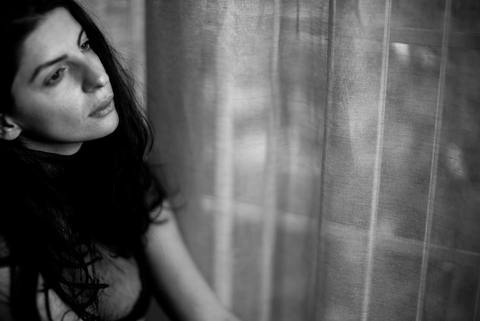
That’s poetic. For leaders how do you get to the point where you have that three dimensional embrace?
By bringing awareness about where the movement should be from. Don’t concentrate on moving your arm. Leading the woman from the arms or putting extra force. Just being grounded on the floor, being strong on your feet. Using your center to move and having a breath in your dance instead of a “boom” sharp, cut, cut. Letting it go. When you’re in your head you can’t dance. You should let it go. You should feel free.
Being patient, listening and vulnerability. These ideas are challenging for a male in our culture. As a teacher what are the biggest challenges for your beginning students?
Beginners like to learn fancy stuff right away. They don’t pay attention to the music and they’re scared to embrace. That’s a problem. If they would listen to me and I wouldn’t have to try to entertain them I would tell them, please listen to a lot of tango music. Let’s work on walking for three months. Or let’s work on the basic and try to put it in your body. The music, the walk. Work on those things first for a while until moving on.
What is it about the walk that makes it so vital in tango?
Tango is all about the walk. There is a lot of depth to it. There’s so many kinds of walks. So many levels of intensity of the walk that you can give. And everything is a walk. It’s straight line, pivot, then walk. Pivot, walk. Or walk, walk, walk. You have to have a good quality in your walk. Otherwise how are you going to project yourself?
One of the most important things to be considered a good dancer is having a good walk. If you have a good walk you get a lot of respect. Really refining the walk takes years.
When you say “walking” it sounds so simple..
I know. There’s so much to it. For me it’s very meditative. When I walk I don’t need to do much if the leader and I connect well. We can just walk. You go into this trance zone.
You’ve accomplished a lot in short time. What’s your next step?
My challenge was to teach alone. Now I’m teaching alone and I’m learning a lot. Learning about teaching and leading which is taking my tango to another level. I’m understanding more about the leader’s perspective and I’m trying to fine tune my following with that knowledge.
I want to reach my potential in tango. I have this image of me as a dancer. Very expressive, very sensual but when I danced I didn’t have enough technique to express that. So the way people perceived me as a dancer was different from what I perceived in myself. It takes a lot of training to match what’s inside with reality. Now my technique is improving and I’m curious to explore that. To show more. To see if I’m getting closer to dancing like the image I carry inside myself.
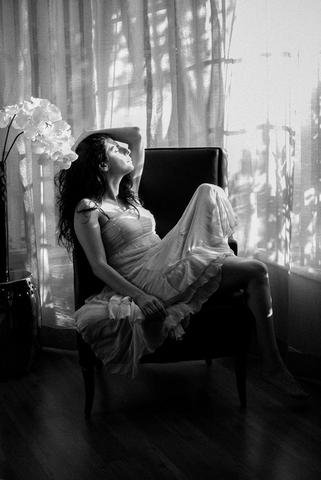
That image of yourself…
The image looks similar to how Geraldine Rojas is dancing. I resonate a lot with her as a woman. Maybe we were sisters in our past lives [Yuliana laughs]. Her movement is amazing, but it’s more than that. Her soul, her spirit and sensuality in tango. I relate to that. Maybe we look different when we dance, but I see her soul, sensuality and what she gives to the man. I understand that and feel we are similar in that way. Maybe nobody else would agree with me. I haven’t been able to express that because I’m not a great dancer. I’m trying to be more open. To be more confident and do more.
Exactly. Portraying those feelings. Giving those sensations. Telling a story. I have a story to tell. When I’m dancing I’m telling a story.. For me tango is not just a dance. It’s about expressing emotions through movement.
It seems as if your real dream is a lifelong journey. It’s something that you’re going to be doing your whole life. Do you see yourself dancing tango for the rest of your life?
Right now I have this dilemma because I’m turning 34 soon. Do I want to start a family and change my life and slow down? In one way I would like to do that because I would like to have something stable in my life. At the end of the day I come home alone and that’s not a good feeling.
When I go to these festivals and I have these amazing connections I think, “This is why I’m still in tango.” I understand this connection. It’s fantastic. And so I’m struggling with myself. If I focus only on tango maybe I’ll never get married. Maybe I’ll never have kids. Maybe I’ll always be alone and that’s a scary feeling. Which route should I choose? I’m struggling. I still want to accomplish a lot in tango and I’m not there yet. I don’t want to settle. There’s still so much fire in me and there’s still so many things I haven’t done. I’m happy with a lot of things I have done and I’ve achieved some of my dreams but there’s still a lot more that I’m curious to discover about myself. If I don’t accomplish those things and get married maybe I will not feel fulfilled. I don’t know.
You mention personal relationships. Do you feel it’s difficult because of tango? Is it kind of awkward to have a boyfriend and him knowing you have this amazing connection with a partner?
It can be easy to confuse sexuality with sensuality. Tango is sensual, not sexual. The connection isn’t the same between a dance partner and somebody that you’re in a relationship with.
It could be that dancing tango could be even more beautiful.
Every dancer has a different focus. I don’t know if you noticed but for example there are salon type male dancers who allow the woman to do things around them. There isn’t a lot of expression through the woman. Or there are a lot of women who are super expressive. They take too much of the dance on themselves and the man becomes the background dancer.
My intent is that we are able to bring out the most expression in each other. I felt like that when I danced in December. It was because of my partner that it felt like that. He gave me the chance to be that way. He was dancing for me. And I feel like he was letting me bloom. To be endless. He brought the best out of me.
I know this is kind of abstract and I may be stretching a little bit. It’s a magic moment you experienced. It was like being completely in love. Does that make sense?
Yeah totally. Being completely in love. You’re absolutely right. It goes beyond the performance. My desire every time i perform is to go to that unconscious level where I don’t know what’s happening. I’m just moving, dancing, feeling. Everybody else disappears. I’d like to have more of those moments.
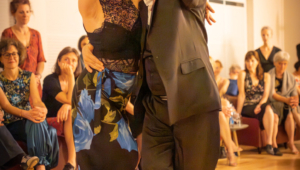
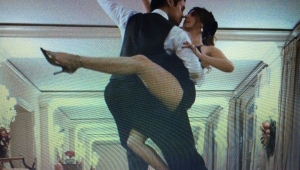
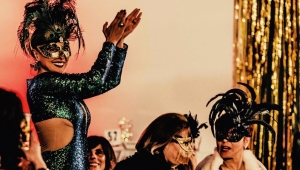

Leave a Reply